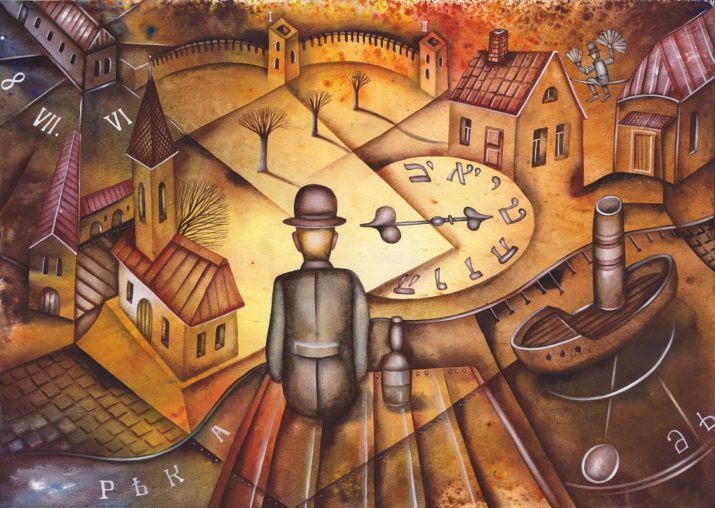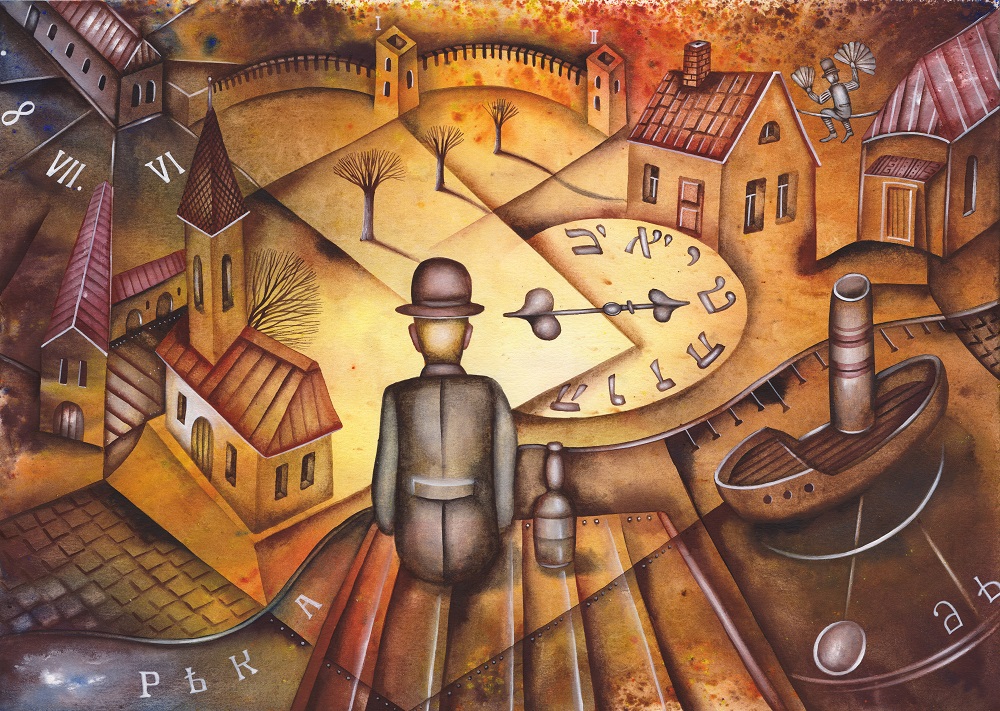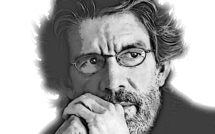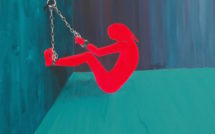

This is part of our special feature on Anxiety Culture.
There is abundant anecdotal evidence of the “conventional wisdom” that one of the defining features of contemporary social existence is the pervasiveness of anxiety. Take the following set of concerns, which are proliferating around certain aspects of our living conditions that seem to be spinning out of control: climate change and its consequences on food systems, the ability to inhabit large areas of the world (e.g., coastlines, deserts, islands), and the stability of ecosystems; increasing prevalence of mental illness, addiction, and chronic medical conditions like obesity in populations; massive population migration and the ensuing disturbances in social and political orders; profound technological changes with regard to our forms of communication, commerce, and employment; spiraling inequalities within and between nations; a building legitimation crisis in democratic societies and the attendant rise of populism, nationalism, and militarism; terrorism, mass shootings, and the ubiquity of media accounts of mass violence; or forms of indebtedness (student, medical, or personal debt) that increasingly lead to chronic insecurity throughout the life cycle. That this is by no means an exhaustive list, and that it cuts across cultures and political systems, underscores the axiomatic manner in which anxiety is now invoked.
There is also abundant empirical evidence that anxiety is a pervasive and insidious feature of modern life. In 1980, the third edition of the American Psychological Association’s Diagnostic and Statistical Manual (DSM III) devoted fifteen pages to anxiety disorders. In 1987, the revised edition included eighteen pages on anxiety disorders, but by the DSM IV’s publication in 1994 the entries had grown to fifty-one pages, only to be eclipsed in the DSM V (2013) by ninety-nine pages on anxiety and related conditions.[1] The National Institute of Mental Health in the United States estimates that thirty-one percent of adults will experience an anxiety disorder in their lifetime.[2] Given its prevalence at the clinical, individual level, one would be fully warranted in following Ivan Illich’s concept of cultural and social “iatrogenesis,” and scaling up these individualized medical concerns to cultural and social phenomena.[3]
Aside from its prevalence in technical and everyday discourse, the many valences of anxiety throughout history help generate an important set of keywords[4] that seem perfectly suited to our time. Etymologically, anxiety derives from Angh, an Indo-Germanic root referring to “narrowing, constricting, and tightening feelings, usually in the chest and throat,” normally in response to fears, threats, and dangers.[5] The physiological dimension of anxiety is very much present in the diagnostic criteria of the DSM, but one can also see it in Aristotelian conceptions of moral education, which aim to develop virtuous dispositions that allow us to confront fear in a healthy manner. Freud brought anxiety into a modern psychological idiom by distinguishing fear, in which the affective dimension of threats and dangers can attach itself to an object, from anxiety, in which the affective dimension persists in a generalized state of uncertainty and insecurity.[6] Soren Kierkegaard characterized this as dread, Martin Heidegger as Angst, but today we can move beyond the description of an existential mood and see its manifestation in the keyword of crisis.[7]
There are many consequences of living in this state of anxiety on an individual or collective level. Invoking crisis or danger tends to speed up our thinking and lend a sense of urgency to our actions, but might this come at the expense of a deeper understanding of the changing face of our societies? In this essay, we want to develop the concept of “anxiety culture” as a more fruitful heuristic with which to analyze the growing and pervasive awareness of our world’s main problems. Anxiety culture allows for facts to drive discussions of these problems, but notes the affective dimension of this moment where facts often harbor emotional attachments that are strongly marked by anxiety patterns.
This concept of anxiety culture, however, does not only refer to fears based on facts. It also draws our attention to various mechanisms in social life related to public discourse. These different discursive spaces create their own special forms of anxiety that proliferate in the media and often show up as broad social moods. The challenge is to recognize the contours of this kind of anxiety, as it comprises a mixture of public communication and social action. Thus, anxiety culture is much more than fear about threatening developments and potentially dangerous incidents. It has become characteristic of our dealing with the increasing problems and undefined solutions of a rapidly changing world. If anxiety culture is about having fears, they are much more generated by feeling the pulse of contemporary life and struggling to conceive of the future than by a cold, analytic study of the present. Stated slightly differently, an examination of anxiety culture is an attempt to resist the reductive leap towards solutions or definitive understandings, and rather to develop a generative new set of conceptual tools for understanding and coping with the present moment. Anxiety, as Kierkegaard put it, “is our best teacher.”
In what follows, we will provide a general outline for how we are conceiving of anxiety culture. We see it as a “middle range theory”[8] (or generative of derivate middle range concepts) akin to the social theories of Zygmunt Bauman and Ulrich Beck, whose work combines the sociological and analytic project of concept formation with the empirical analyses of various disciplines. The initial discussion will focus on the former side of that combination before moving on to the latter side of empirical analysis. As such, we think anxiety culture has the capacity to generate robust research agendas in the areas of technology, climate change, population health, and migration. Thus, we will conclude by sketching a terrain of interdisciplinary research questions associated with education that exemplifies the connections between these disciplinary concerns that we imagine solidifying under the general heuristic of anxiety culture.
Anxiety Culture as a Middle Range Theory
The designation of a specific historical juncture as having an “anxiety culture” is not specific to the present. In 1948, W.H. Auden was awarded the Pulitzer Prize for Poetry for his long verse poem The Age of Anxiety. Two years later the psychologist Rollo May published The Meaning of Anxiety, which claimed, “The evidence is overwhelming that we live today in an ‘age of anxiety’…The ordinary stresses and strains of life in the changing world of today are such that few if any escape the need to confront anxiety and deal with it in some manner.”[9] Despite long stretches of affluence in the United States and Western Europe, an anxious mood emerged out the Second World War. Prior historical periods of war and social upheaval have also generated reflections on anxiety; therefore it is incumbent upon us to develop our understanding of anxiety culture as a useful heuristic for understanding the contemporary moment and some of the troubles we attach to it.
We propose anxiety culture as an instance of “middle range theorizing.” The term derives from the sociologist Robert K. Merton, who contrasted it with “grand theory” to avoid the temptation to universalize our judgments about an epoch or social phenomenon. As Anders Blok has recently insisted, middle range theorizing is concerned with the production of concepts that satisfy both empirical and theoretical ambitions. Put another way, middle range theorizing aims to produce concepts with enough theoretical grounding to move past a purely descriptive practice while at the same time retaining enough of an empirical grounding to resist the universalizing tendencies of social theory.
As will become evident in the following section, anxiety culture brings a specific set of concerns to contemporary life, particularly those surrounding the experience or discussion of threats and dangers. However, it can be situated within a field of modern social theory that is motivated by overlapping interests.
The first such area is how to understand the role that fear plays in the contemporary world, both as a personal experience and as a social mood. The German sociologist Heinz Bude argues that an understanding of fear as a social mood must displace our tendency to reduce it to a biographical event or clinical diagnosis. “It is through concepts of fear,” he writes in a recent book, “that society takes its own pulse.”[10] The Polish sociologist and philosopher Zygmunt Bauman calls fear “the most sinister of the demons nesting in the open societies of our time,” warning that the insecurity and sense of impotence that it generates “won‘t be exorcized until we find (or more precisely construct)” the conceptual and practical tools to regain a sense of agency.[11]
For Bauman, fear is one feature that is central to what he has characterized as “liquid modernity.” Another feature is uncertainty, or the experience of living through times of incessant change and conceptual upheaval. One important methodological consequence of studying an unstable object is the avoidance of grand theories and the application of middle range concepts to a diverse set of social phenomena.[12] To this end, the American sociologist Daniel Little has argued that the experience of chronic or structural uncertainty is “not well understood.” Comprehensive theories like world systems theory, rational choice theory, or modernization theory have proven analytically deficient, leading Little to conclude that “it is a radical misunderstanding of the nature of the social to imagine that there might be such theories.”[13] Anxiety culture is a further contribution to this understanding of uncertainty, which Bauman and Little recognize is serviced better by middle range concepts (informed by both theoretical and empirical concerns) than totalizing theories.
A final associated discourse worth mentioning is Ulrich Beck’s conception of the “risk society.” Before his untimely death in 2015, Beck produced a rich and suggestive body of work surrounding the reversals of our collective understanding of positive and negative externalities in different social formations (what he calls “goods” and “bads”). Joshua Yates summarizes the general picture thusly:
Put simply, risk society signals a new phase of modernity in which what were once pursued and fought over as the ‘goods’ of modern industrial societies, things like incomes, jobs, and social security, are today off-set by conflicts over what Beck calls the ‘bads’. These include the very means by which many of the old goods were in fact attained. More pointedly, they involve the threatening and incalculable side effects and so-called ‘externalities’ produced by nuclear and chemical power, genetic research, the extraction of fossil fuels, and the overall obsession with ensuring sustained economic growth.[14]
Nowhere is such a reversal felt more strongly than in the domain of climate change, where the high quality of life produced by industrialization is now seen as the primary agent in the endangerment of the very conditions sustaining life. Anxiety culture shares this imperative to understand the experience of one’s best understandings of positive actions undergoing a sudden reversal.
We view anxiety culture as residing in this cluster of middle range theories, but making an important contribution by attending to the tangle of concepts and experiences that constitute our understanding of anxiety – fear, uncertainty, risk, threats and dangers, crisis, and the unsettling of our most basic human claims to stability.
An Emergent Research Agenda
There are areas of scholarly inquiry, such as technology, climate change, population health, and migration, which pose the question of anxiety culture in distinctive ways with different disciplinary imperatives. However, we believe it is more accurate to view these areas as interdisciplinary clusters instead of reducing them to distinct disciplinary traditions. When approached through the lens of anxiety culture, their programs interpenetrate in substantive ways. For example, questions of security and education can be meaningfully taken up in any of the clusters, and when these questions are attached to the conceptual field of anxiety culture important interdisciplinary work will follow. We therefore would like to conclude by sketching in a very provisional manner what such work would look like by fixing upon education, with the caveat that this by no means exhausts all of the avenues for a robust research agenda driven by an investigation of anxiety culture and education.
The philosopher Hannah Arendt once remarked that “education has an evil sound in politics” because education is taken to be a formative experience for children, and when extended to adult citizens it inevitably involves coercion. Yet she also noted that it is a question of the utmost political importance, as education marks the point where “we decide whether we love the world enough to assume responsibility for it and by the same token save it from that ruin which, except for renewal, except for the coming of the new and the young, would be inevitable.”[15] Such a tension nicely encapsulates a recurrent source of anxiety in education, namely the tension between freedom and control, or to put it in Arendt’s terms, between past and future.
However, as a middle range concept, anxiety culture can yield a more specific set of research questions surrounding the current state of education. On the empirical side, there is a growing body of evidence that educative processes are more frequently marked by anxiety patterns in today’s youth.[16] For example, we imagine a multi-sited, comparative population health study that can help us better understand the different shapes anxiety takes in educational settings and what effects this has on development over the life course.[17] However, in the spirit of Illich’s concept of iatrogenesis, we do not want to study anxiety in a reductive psychological or medical idiom, but rather to understand it as a cultural and social phenomenon that would be enriched by ethnographic accounts of students, teachers, families, and administrators who are working against the background of migration,[18] environmental threats, and technological saturation.
In our view, one of the major contributors to anxiety within educative processes is the overloading of educational institutions, especially public institutions, with the responsibility to adequately frame and manage these threats and dangers for students. We all know that there are learning programs at school, the aim of which is to lead our pupils to better and more responsible ways of acting with regard to the well-known fields of social problems. However, such work does not take place insulated from exaggerated representations of such threats that circulate through the mass media and the more diffuse, but ubiquitous, digital media landscape. We therefore imagine a third component of research into education that draws on the resources of discourse analysis. Questions here would examine how anxiety reframes the expectations and responsibilities we place upon educational instructions, and how this manifests within the daily experience of teachers and students themselves.
In conclusion, as a middle range theory, anxiety culture has the ambition of making itself available to this range of questions, working in complementary ways with disciplinary norms and methodologies, but importantly catalyzing productive encounters between disciplines that can result in consilience. Education is the one area where this balance of empirical and theoretical work can occur. While we do not share Freud’s grandiose view that anxiety is “a riddle whose solution would be bound to throw a flood of light on our whole mental existence,” we do agree with his view of anxiety as “a nodal point at which the most various and important questions converge.” Developing an adequate conceptual language and research framework around and with which to understand anxiety culture strikes us as an eminently challenging and worthy task for scholars and citizens alike.
Michael I. Schapira earned his Ph.D. in philosophy and education at Teachers College, Columbia University, and is currently teaching in the Department of Philosophy at Saint Joseph’s University, Philadelphia. He is the author of “The End of the University?”, “The Crisis in Teacher Education” (forthcoming in the Oxford Encyclopedia of Global Perspectives on Teacher Education), and “Kant vs. the Managers: Institutional Reproduction and the Modern University” (forthcoming in the Journal of Philosophy of Education).
Ulrich Hoinkes is University Professor for Romance Languages and Speaker of the Center on Humanities and Education at the Christian-Albrechts-University of Kiel, Germany, and a visiting scholar at Teachers College, Columbia University. He specializes in sociocultural history, sociolinguistics, and education. His recent scholarship and publications focus on lesser used Romance Languages and linguistic and cultural change due to migration.
John P. Allegrante, an applied behavioral scientist and globalist whose research focuses on chronic disease self-management in adults and threats to the health of children and adolescents during the early life course trajectory, is a Professor in the Department of Health and Behavior Studies at Teachers College and in the Department of Sociomedical Sciences at the Mailman School of Public Health, Columbia University.
Photo: Man with Both by Eugene Ivanov | Shutterstock
References:
[1] See Allan V. Horowitz, Anxiety: A Short History (Baltimore: Johns Hopkins University Press, 2013), pp. 143-161
[2] https://www.nimh.nih.gov/health/statistics/any-anxiety-disorder.shtml (Accessed June 11, 2018)
[3] Ivan Illich, Medical Nemesis (New York: Pantheon, 1982).
[4] See Raymond Williams, Keywords (New York: Oxford University Press, 1983)
[5] Horowitz, p. 5.
[6] Freud wrote in his Introductory Lectures on Psychoanalysis that “The problem of anxiety is a nodal point at which the most various and important questions converge, a riddle whose solution would be bound to throw a flood of light on our whole mental existence.” However, his views on anxiety changed throughout his career, with earlier conceptions adopting a physiological model of undischarged libido, and latter conceptions turning around the psychic dynamics of the ego and its defensive mechanisms against threats and dangers. For a useful introduction see Charles Shepherdon’s introduction to Roberto Harari, Lacan’s Seminar on Anxiety: An Introduction (New York: Other Press, 2001).
[7] See Janet Roitman, Anti-Crisis (Durham: Duke University Press, 2014) and Zygmunt Bauman and Carlo Bordoni, State of Crisis (Cambridge: Polity Press, 2014).
[8]http://www.oxfordhandbooks.com/view/10.1093/oxfordhb/9780199215362.001.0001/oxfordhb-9780199215362-e-2 (Accessed June 11, 2018).
[9] Rollo May, The Meaning of Anxiety (New York: W.W. Norton, 1977), p. ix.
[10] Heinz Bude, Society of Fear (Cambridge: Polity, 2017).
[11] Zygmunt Bauman, Liquid Modernity (Cambridge: Polity, 2007), p. 26.
[12] Bauman has also written books on Liquid Love, Liquid Fears, and Liquid Surveillance
[13] Daniel Little, New Directions in the Philosophy of Social Science (London: Rowan and Littlefield, 2016), p. xiv.
[14] Joshua Yates, quoted in Ulrich Beck, The Metamorphosis of the World (Cambridge: Polity Press, 2016), p. 66-7.
[15] Hannah Arendt, Between Past and Future (New York: Viking Press, 1968), p. 196.
[16] See Daniel P. Keating, Born Anxious (New York: St. Martins Press, 2017).
[17] See, for example, Inga Dora Sigfusdottir, Alfgeir Logi Kristjansson, Thoroflur Thorlindsson, and John P. Allegrante, “Stress and Adolescent Well-Being: The Need for an Interdisciplinary Framework, Health Promotion International, vol. 32, 2017, pp. 1081-90; Laufey Dis Ragnarsdottir, Alfgeir Logi Kristjansson, Inga Eva Thorisdottir, John P. Allegrante, Heidis Valdimarsdottir, Steinunn Gestsdottir, and Inga Dora Sigfusdottir, “Cumulative Risk Over the Early Life Course and its Relations to Academic Achievement Outcomes in Childhood and Early Adolescence, Preventive Medicine, vol. 96, 2017, pp. 36-41; and Inga Eva Thorisdottir, Bryndis Bjork Asgeirsdottir, Rannveig Sigurvinsdottir, John P. Allegrante, and Inga Dora Sigfusdottir, “The Increase in Symptoms of Anxiety and Depressed Mood Among Icelandic Adolescents: Time Trend between 2006 and 2016, European Journal of Public Health, vol. 29, no. 5, 2017, pp. 856-61.
[18] To give one example of where these different clusters interact, there is a growing body of research in political science that examines the way prejudice and racism function at the neurological level, leading to a concomitant “neuropolitical theory” that integrates neuroscientific knowledge to questions of cooperation in diverse political communities. For a summary of current work see Liya Yu’s dissertation “Examining Dehumanization Through the ‘Political Brain Perspective’: Towards a Minimal Neuropolitical Theory for Hyperdiverse Societies (2017). (https://doi.org/10.7916/D8697FV7 (Accessed June 11, 2018)
Published on July 2, 2018.




